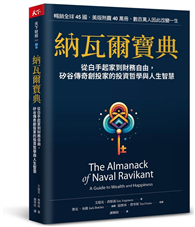"The Fabled Third is the final instalment in the sequence that began with A Presentment of Englishry. It continues to follow Laȝamon’s 12th century version of the legendary history of Britain up to the death of Uther, ending as the story begins to overlap with Sir Thomas Malory’s later, better known tale of King Arthur. When Laȝamon’s Uther arrives at Tintagel, he doesn’t enter the late fifth century settlement revealed by recent archaeology, but a castle that didn’t exist on that site. Looking at the fifth century through the lens of the twelfth produces a blurred version of the past. My attempts to reconcile that version with what is now known about late-fifth-century Britain makes the picture even less focussed. I recommend the pleasures of a flexible attitude towards geography, history, architecture and chronology." -Liam Guilar
"The deconstructionist view of there being no single attainable truth about the past is worth bearing in mind as we become immersed in Liam Guilar’s moving reconstruction of the land called Britain in the long-gone world of the 11th and 12th centuries: there are merely the histories which people tell to empower themselves in the present. This is of course applicable both to history and to memory since everything we see is filtered through our present-day mental lenses and we interpret the past in the light of what we have now become.[...] Liam Guilar’s reconstruction of the foundations of our past is a con-vincing sift of details that offers the reader a ’morning familiar as cold stone’ with ’Rain drifting through the smoke hole in the roof’." -Ian Brinton, Long Poem Magazine| FindBook |
有 1 項符合
The Fabled Third的圖書 |
 |
The Fabled Third 作者:Guilar 出版社:Shearsman Books 出版日期:2025-01-17 語言:英文 規格:平裝 / 174頁 / 22.86 x 15.24 x 1.02 cm / 普通級/ 初版 |
| 圖書館借閱 |
| 國家圖書館 | 全國圖書書目資訊網 | 國立公共資訊圖書館 | 電子書服務平台 | MetaCat 跨館整合查詢 |
| 臺北市立圖書館 | 新北市立圖書館 | 基隆市公共圖書館 | 桃園市立圖書館 | 新竹縣公共圖書館 |
| 苗栗縣立圖書館 | 臺中市立圖書館 | 彰化縣公共圖書館 | 南投縣文化局 | 雲林縣公共圖書館 |
| 嘉義縣圖書館 | 臺南市立圖書館 | 高雄市立圖書館 | 屏東縣公共圖書館 | 宜蘭縣公共圖書館 |
| 花蓮縣文化局 | 臺東縣文化處 |
|
|
圖書介紹 - 資料來源:博客來 評分:
圖書名稱:The Fabled Third
|











